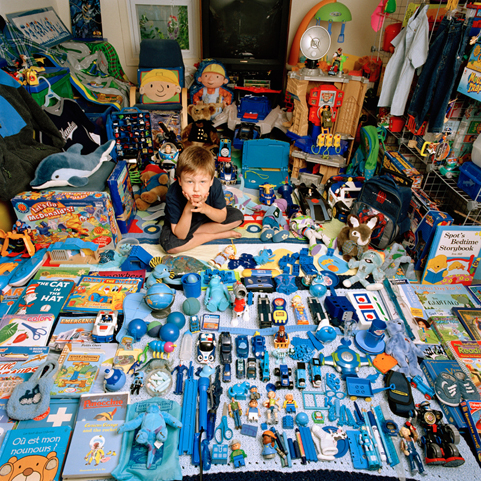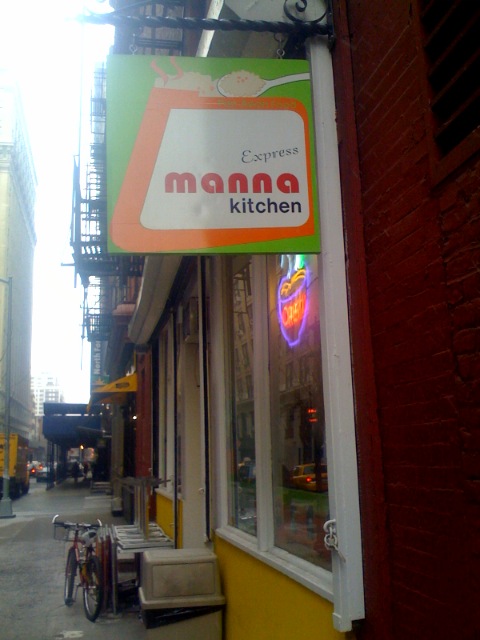February 2, 2008
Kobong

In her book Things Korean, O-Young Lee writes about a traditional measuring cup called the kobong. Used to measure grain, especially rice which was a main form of currency for much of Korean history, she writes:
Kobong is a concept which has no one-word equivalent in other languages... It means heaping the measuring cup till it overflows, and even then some.... To provide a some idea of how high it is heaped, a dishonest measure in Korea is one where the grain is heaped to overflowing only twice, not three or four times. If it is not absolutely spilling over, that is being pretty stingy. p.14
In other words, the kobong was not a measure of scientific accuracy, but of inaccuracy. And it's importance was not so much the grain itself but what it meant relationally.
I love this because Koreans aren't anything if not relationship oriented. And I love that once, in our highly ordered Confucian culture, even the smallest objects had a place and it's purpose too was relational.
On the flip side, I think this is what was especially hard for Korean immigrants to the US. To come from the highly ordered to the un-ordered, and because meaning itself was found in the order, for many, meaning itself was destroyed.
I am thinking of someone, of course, as I write this. An uncle here, another there but in general of all the Korean men who moved here and found themselves as grocers and dry cleaners and janitors despite their educations and degrees, and slowly lost themselves to their invisible places as non-Americans. For them, I wish kobong.
February 7, 2008
Warning: I am actually going to discuss the Meta. Of. Kimchee.

I get in these eating moods where all I seem to do is look for kimchee substitutions, especially when I don't have any at home. Everything gets covered in some kind of hot sauce: falafels, tacos, vietnamese pork chops, scrambled eggs... and the best is of course when that hot sauce is also vinegary like salsa, or vietnamese sriracha sauce which is already vinegary but WITH the little pickled carrots and daikon can almost make you forget you were really needing some kimchee. I know every Korean has eaten his share of ramen with pickles so apparently that extra salt-vinegar-pickle crunch on top of salty savory broth can also hit the spot.
But what is it exactly about kimchee that so defines our cuisine? Why do we have to have it, crave it, and so, are cursed by it?
I read once in some online dissertation that Korean food had six flavors unlike other cuisines which normally have five. Salty, sweet, sour, spicy, bitter and pungent. This writer included kimchee as pungent before spicy which of course it is also. In any case, he didn't really address why or what it meant, just that acquiring this sixth flavor was difficult but transformative once you got it.
My take on this is from a cook's perspective.
Cooking is a primal kind of alchemy. You hunt, you gather, and add fire to transform flesh and field into flavor, into nutrition, and render something that was once out there either as blood and muscle or soil and sun, into an intimate experience which you take into yourself. (This is why food and sex in my opinion go hand in hand and why smoking, the element of fire, is also a natural factor. But I digress.)
At the core of this alchemy is the idea of change, of transformation and, now bear with me, the experience of eating Korean food is predicated on this idea. Where western food is meant to be experienced finally and separately - such as the lovely steak with it's separate side dishes none of which are meant per se to be eaten in the same bite. Korean food is all about shifting flavor and hence, shifting experience. You start with a clean palate, a base of pure white carbohydrate and go through a wonderful choreography of choosing banchan, and no two bites are the same.
Now enter kimchee.
That mouthful of warm sticky rice plus beef and bit of shigumchi (spinach) you're chewing and enjoying, chewing and swallowing then bam! in comes a fireball of salt/sweet/fiery crunch and - a sudden crescendo - the rice, beef and spinach are again transformed. How complicated is that?
And as if it weren't enough to have all this, Koreans add still more to the table — the elements of energy which changes the food even more and right before your eyes. I'm talking about the stew that arrives boiling, or the bibimbop that crackles in it's stone bowl, the cold soups with chunks of ice floating among the cucumber and pear.
Which is why those who do not get Korean food are so hard to watch. They sit at the feast, picking singly at a strand of bean sprout before washing it down with water, or dig into their meal of white rice and bulgogi without even a glance at the symphony around them. And forget kimchee, the smell alone offendeth.
The musical element to eating I think is no accident. For every banchan you add to the table a whole new note is added, and the orchestration of your meal becomes that much more enriched. But the point is kimchee, that final beat which brings it all home. It marries the flavors and instead of ending your mouthful of experience in a quiet fade, it brings it up and loud. It's the punctuation to our score, the last beat in each measure without which the experience is chaotic and unorganized, lacking structure and meaning, a string of notes that sound okay but has no beat.
February 7, 2008
Jeong Mee Yoon
A lovely photographer based in Seoul. I'm drawn especially to the humor in her work and the immediate sense of accessibility. My husband met her in Santa Fe last year and learned she'd been a 'regular' housewife before pursuing photography. When asked if her husband appreciated her career she answered with a grin, "He change mind when I make money." Koreans are if anything a practical people...

A link to her online portfolio is here.
February 14, 2008
Legacy
Part of my narrative legacy as a 1.5 Korean-American is the burden of my parents' roles as Koreans in the inner-city. Their generation, which for me, includes six aunts, one uncle and a set of grandparents on my maternal side share a similar mindset regarding black Americans despite the fact that only my parents were the typical inner-city grocers.
We lived in Philadelphia. A city that is %12 black and one whose Korea town was and is a mean little strip of busy 5th street set squarely in a poor barely working class neighborhood. Trash fly around in the street in front of rowhouses that look more propped up than standing and yet Korean immigrants came and built their restaurants (the best jja-jjang mein is found here for less than $5), beauty salons and cell phone shops right next to beauty discount stores and fish and chicken fry houses with milky thick bulletproof windows.
Why?
Because Koreans of this generation are by and large thrifty. Cheap. Forever looking for a deal. And they would never spend their hard-earned money on something as valueless as real estate, especially rented real estate, when their point is to make money, in cash. And because Korean customers have the same understanding they look straight past appearances and think only of what they're going to order to eat, or how their hair should be done and they'll go just as easily from a burnt out city strip mall restaurant to church to their usually much nicer homes in the suburbs. No problem.
But there's another reason Korean immigrants felt at ease in the inner city. More than cheap real estate they felt at ease with poor black people because even before they moved to the States from Korea, they came with an understanding that they were superior in status to black people and therefore, superior. Period. (A problem with Confucian ideology in general is great at organizing society and relationships, bad at valuing human life.) Then throw into the mix some crazy culture shock, shame issues about being seen as shopkeepers with poor English, and a profound sense of dislocation, and a fair number of our parents could be found following their black customers around the store and muttering to each other disparaging comments about black people in general. No stranger to violence, many owned guns and guard dogs.
Alot of these issues were obviously related to the same problems of violence, crime and poverty that plague the inner city. Our parents stumbled into the mess almost randomly but then became players in their own right. Meanwhile most of us kids reaped the rewards, probably somewhere in the suburbs with nice homes, cars and schooling — we were the point after all — but few of us were in the dark about where we got our money. Weekends and after school days spent at the store collecting food stamps and coins, fending off racist slurs, drunks and gangsters while overcompensating with politeness toward our good customers- the single moms, the grandmothers, the church ladies and worker men. We were able to live in two profoundly opposite cultures daily without much thought to it at all. It was just the way it was.
Now as an adult, I think of this part of our history, and wonder about a narrative for it all. It's already come and gone for the most part, our parents by and large succeeded and we have moved on from the inner-city shops to everything from white collar professions to wandering artists (much to their dismay). We aren't the model minority for nothing. And yet this is our past. Our very recent past. And we have witnessed things that they don't talk about it in the ongoing white-black discourse about race relations and the inner-city. We know things about entrenched cultural values, whether good or bad, and we know most of all how much we owe a countless number of poor black Americans whose food stamps and dollars paid for our rice, our church picnics, and college educations. Those same dollars are helping many of us still.
As a critical part of our legacy, and one many 1.5 KA's still struggle with (racism is after all inherited), I see how many of us now are trying to find their places as citizens, as adults in our chosen society and country. And all this comes to mind when I saw and heard thisBarack Obama's speech to a Christian social action group called the Sojourners. He was speaking on christianity and religion as it related to politics. His message was so simple and yet profound it almost knocked me off my feet and made me realize how jaded I had really become. And how much I could be doing in the world for good. And how much my past ties me to the desperate needs in the world right now. And in a sudden moment of clarity, I see that this is how my past becomes the future, it's how I understand it in order to live right now.
Happy Valentine's Day.

February 15, 2008
Dokkaebi...
...in my house.
One shrinks tupperware tops.
Another stops up the sprayer on my hairspray bottle. (I especially hate it when he stops up only part of the sprayer - that one useless stream of hairspray does nothing.)
A third puts just one tiny grease spot on the chest part of my favorite shirts.
They are driving me nuts.
February 17, 2008
Heaven Sent
A spot of sunshine on a rainy day:

28 E. 18th, betw. Broadway and Park Ave. South.
February 21, 2008
Everyday Korean Cooking

Out of the twelve or so Korean cookbooks I've collected over the years my favorite so far has been Everyday Korean Cooking. When it was in print it was $12 but now the cheapest copy I could find was $50! In any case, I love that it is homemade looking, with a basic wire binder that they'll do for you at Kinko's and a font that reminds me of the early days when you had about two choices on your home computer.
I learned most of my basic dishes from this book and as I got used to making them I'd add ingredients and techniques from other cookbooks. (I find the nationalism and OCD aspects of Koreans come out when writing cookbooks because the recipes can get very long with almost arcane techniques and discussion such as one recipe which mourned the use of metal knives to cut vegetables when historically it was considered a kind of profanity, you ought to tear vegetables by hand.)
Here is a simple recipe for shigumchi, kongnamul, or soochoo namul:
1 bunch of spinach/ 1 bag of sprouts (pre-washed spinach will save you heartache)
3-4 diced scallions
2-3 minced garlic
1/2 teaspoon sugar
salt, pepper
soy sauce
sesame oil
sesame seeds (not essential but close)
1 teaspoon vinegar (again, not essential especially if you want to keep the banchan around for longer than two days, the vinegar quickly overripens the vegetables)
Directions:
1. Boil water in a medium sized pot.
2. When boiling, lower heat to high simmer, then blanch batches of vegetables for at least 20 seconds until wilted. (Blanching=dipping in hot water then removing) Vegetables should wilt but be slightly crunchy.
3. Drain and squeeze blanched vegetables. (Your armful of spinach will now fit in your hand)
4. Throw in garlic, scallion, and seeds (sesame seeds can be toasted) until it looks good to your eye. Taste.
5. Pour a bit of sesame oil in your hand and rub into vegetables. Taste.
6. Pour a bit of soy sauce in your hand and do the same.
7. Add sugar.
8. Add vinegar.
Mix and serve chilled if desired.